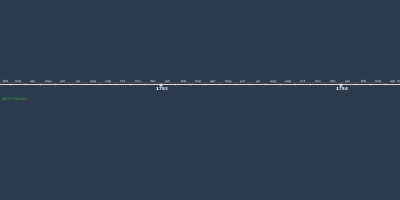Occupation of the Dominican Republic (5 magg 1916 anni – 27 dic 1924 anni)
Descrizione:
The first United States occupation of the Dominican Republic lasted from 1916 to 1924. It was one of the many interventions in Latin America undertaken by the military forces of the United States in the 20th century. On the 13 May 1916, Rear Admiral William B. Caperton forced the Dominican Republic's Secretary of War Desiderio Arias, who had seized power from Juan Isidro Jimenes Pereyra, to leave Santo Domingo by threatening the city with naval bombardment.Two days after the Battle of Guayacanas, on the 3 July, the Marines moved onto Arias' stronghold in Santiago de los Caballeros. However, "A military encounter was avoided when Arias arrived at an agreement with Capteron to cease resistance." Three days after Arias left the country, the rest of the occupation forces landed and took control of the country within two months, and on the 29 November the United States imposed a military government under Captain (later Rear Admiral) Harry Shepard Knapp, Commander of the Cruiser Force aboard his flagship, USS Olympia
Marines claimed to have restored order throughout most of the republic, with the exception of the eastern region, but resistance continued widespread in both, direct and indirect forms in every place. The US occupation administration, however, measured its success through these standards: the country's budget was balanced, its debt was diminished, economic growth directed now toward the US; infrastructure projects produced new roads that allowed the movement of military personnel across all the country's regions for the first time in history; a professional military organization that took away the power from local elites and made soldiers more loyal to the national government, the Dominican Constabulary Guard, replaced the former partisan forces responsible for the civil war with groups less hostile to the US occupation.
Most Dominicans, however, greatly resented the loss of their sovereignty to foreigners, few of whom spoke Spanish or displayed much real concern for the welfare of the republic. A guerrilla movement, known as the gavilleros, with leaders such as General Ramón Natera, enjoyed considerable support from the population in the eastern provinces of El Seibo and San Pedro de Macorís. Having knowledge of the local terrain, they fought from 1917 to 1921 against the United States occupation. The fighting in the countryside ended in a stalemate, and the guerrillas agreed to a conditional surrender.
After World War I, public opinion in the United States began to run against the occupation. Warren G. Harding, who succeeded Wilson in March 1921, had campaigned against the occupations of both Haiti and the Dominican Republic. In June 1921, United States representatives presented a withdrawal proposal, known as the Harding Plan, which called for Dominican ratification of all acts of the military government, approval of a loan of $2.5 million USD for public works and other expenses, the acceptance of United States officers for the constabulary—now known as the National Guard (Guardia Nacional)—and the holding of elections under United States supervision. Popular reaction to the plan was overwhelmingly negative. Moderate Dominican leaders, however, used the plan as the basis for further negotiations that resulted in an agreement between U.S. Secretary of State Charles Evans Hughes and Dominican Ambassador to the United States Francisco J. Peynado on June 30, 1922, allowing for the selection of a provisional president to rule until elections could be organized. Under the supervision of High Commissioner Sumner Welles, Juan Bautista Vicini Burgos assumed the provisional presidency on October 21, 1922. In the presidential election of March 15, 1924, Horacio Vásquez Lajara, an American ally who cooperated with the United States government, handily defeated Peynado. Vásquez's Alliance Party (Partido Alianza) also won a comfortable majority in both houses of Congress. With his inauguration on July 13, control of the republic returned to Dominican hands.
Despite the withdrawal, there were still concerns regarding the collection and application of the country's custom revenues. To address this problem, representatives of the United States and the Dominican Republic governments met at a convention and signed a treaty, on December 27, 1924, which gave the United States control over the country's custom revenues. In 1941, the treaty was officially repealed and control over the country's custom revenues was again returned to the government of the Dominican Republic. However, this treaty created lasting resentment of the United States among the people of the Dominican Republic.
Aggiunto al nastro di tempo:
Data:
5 magg 1916 anni
27 dic 1924 anni
~ 8 years and 7 months
